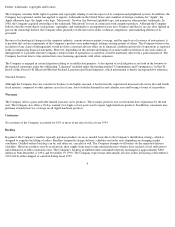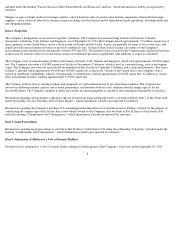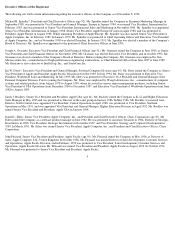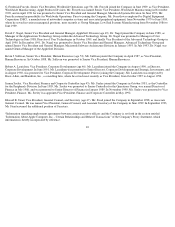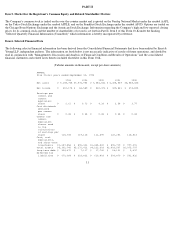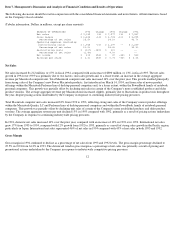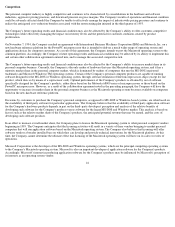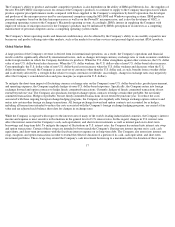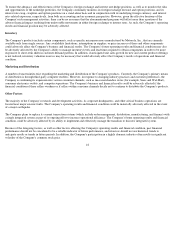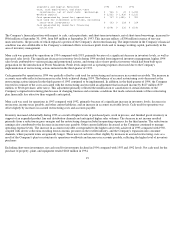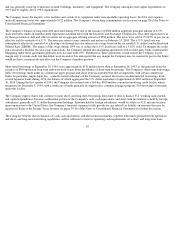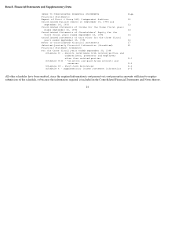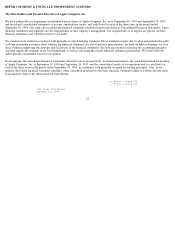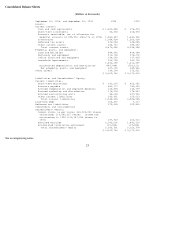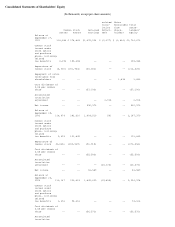Apple 1994 Annual Report Download - page 17
Download and view the complete annual report
Please find page 17 of the 1994 Apple annual report below. You can navigate through the pages in the report by either clicking on the pages listed below, or by using the keyword search tool below to find specific information within the annual report.Factors That May Affect Future Results and Financial Condition
The Company's future operating results and financial condition are dependent on the Company's ability to successfully develop, manufacture,
and market technologically innovative products in order to meet dynamic customer demand patterns. Inherent in this process are a number of
factors that the Company must successfully manage in order to achieve favorable future operating results and financial condition.
Product Introductions and Transitions
Due to the highly volatile nature of the personal computer industry, which is characterized by dynamic customer demand patterns and rapid
technological advances, the Company frequently introduces new products and product enhancements. The success of new product
introductions is dependent on a number of factors, including market acceptance, the Company's ability to manage the risks associated with
product transitions, the effective management of inventory levels in line with anticipated product demand, and the manufacturing of
products in
appropriate quantities to meet anticipated demand. Accordingly, the Company cannot determine the ultimate effect that new products will have
on its sales or results of operations.
On March 14, 1994, the Company introduced Power Macintosh, a new line of Macintosh computers based on a new PowerPC family of RISC
microprocessors. The Company's results of operations and financial condition may be adversely affected if it is unable to successfully complete
the transition of its lines of personal computers and servers from the Motorola 68000 series of microprocessors to the PowerPC microprocessor.
The success of this ongoing transition will depend on the Company's ability to continue to sell products based on the Motorola 68000 series of
microprocessors while gaining market acceptance of the new PowerPC processor-based products, to successfully manage inventory levels of
both product lines simultaneously, and to continue to coordinate the timely development and distribution by independent software vendors of
new "native" software applications specifically designed for the PowerPC processor-based products.
The rate of product shipments immediately following introduction of a new product is not necessarily an indication of the anticipated future
rate of shipments for that product, which depends on many factors, some of which are not under the control of the Company. These factors may
include initial large purchases by a small segment of the user population that tends to purchase new technology prior to its acceptance by the
majority of users ("early adopters"); purchases in satisfaction of pent- up demand by users who anticipated new technology and as a result
deferred purchases of other products; and overordering by dealers who anticipate shortages due to the aforementioned factors. The preceding
may also be offset by other factors, such as the deferral of purchases by many users until new technology is accepted as "proven" and for which
commonly used software products are available; and the reduction of orders by dealers once they believe they can obtain sufficient supply of
product previously in backlog.
Backlog is often volatile after new product introductions due to the aforementioned demand factors, often increasing sharply coincident with
introduction, and then reducing sharply once dealers and customers believe they can obtain sufficient supply of product.
The measurement of demand for newly introduced products is further complicated by the availability of different product configurations, which
may include various types of built-in peripherals and software. Configurations may also require certain localization (such as language) for
various markets and, as a result, demand in different geographic areas may be a function of the availability of third-party software in those
localized versions. For example, the availability of European- language versions of software products manufactured by U.S. producers may lag
behind the availability of U.S. versions by a quarter or more. This may result in lower initial demand for the Company's new products outside
the United States, although localized versions of the products may be available.
15



